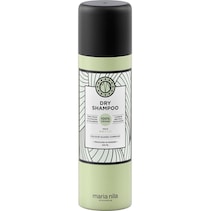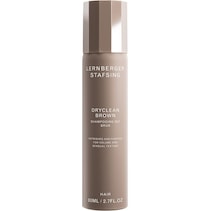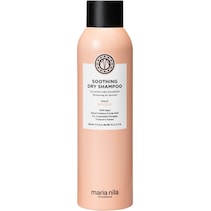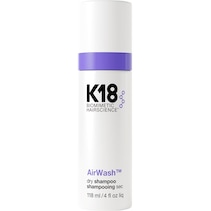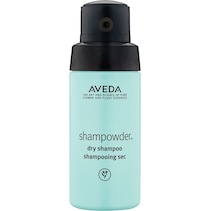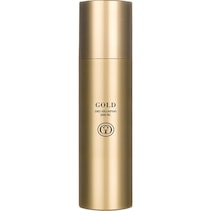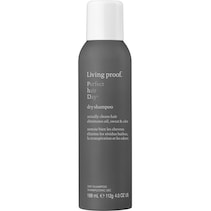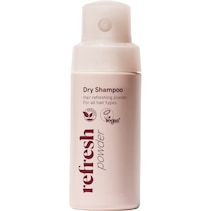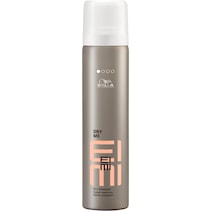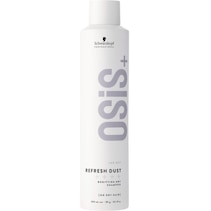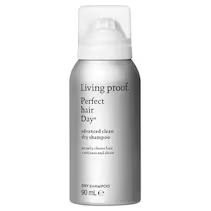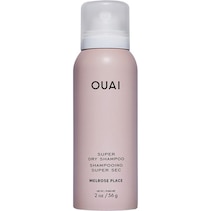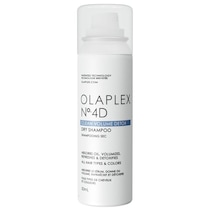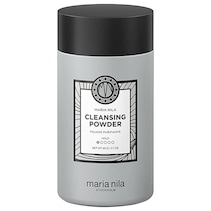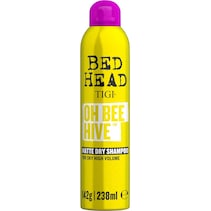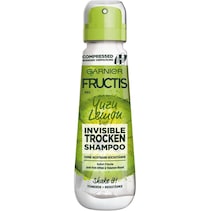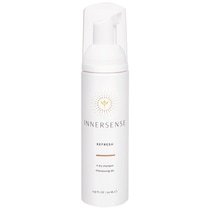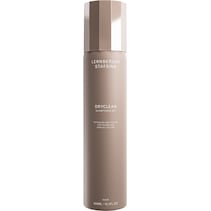
How to use dry shampoo – freshness and volume without white residue
Who hasn’t been there? Some days we just don’t have the time or we don’t feel like washing our hair. Thanks to dry shampoo, such days are a thing of the past. It restores instant freshness to your hair and also gives it great texture, which makes it really easy to create beautiful hairstyles. We show you how to use dry shampoo – without white residue.
31 January 2024 • 3 min. reading time
Table of contents
How does dry shampoo work?
Dry shampoo is the friend we all need. When you don’t have time or don’t feel like washing your hair, you can use dry shampoo to refresh your hair. This works because dry shampoo contains starches which absorb the grease in your hair and mattify it. Your hair feels bouncy and fresh again – and also looks it.
Some dry shampoos contain other ingredients, which give the hair additional nourishment and volume. Fine hair, above all, benefits from these qualities because it’s easier to style when you use dry shampoo. In addition, dry shampoo also comes in many fragrances, which means your hair not only looks fresh, it also smells fresh. If you take care to use a few tricks when using dry shampoo, the product will quickly become a favourite.
How to use dry shampoo properly in four steps
Dry shampoo transforms flat, greasy hair into bouncy, fresh hair that is presentable. It enables you to bridge the gap between hair washes and is also a true saviour in last-minute emergencies. You should, however, bear in mind the white residue left behind by the product. You should be especially thorough with dark hair. Observe these four steps for using dry shampoo and our expert tips to be able to enjoy all the benefits of a dry shampoo.
Step 1: Select the right dry shampoo
There are now numerous brands available that offer dry shampoo in various forms. Some are designed for particular hair types or hair colours, while others are intended to create lots of volume or deliver moisture. If you have dark hair, a tinted dry shampoo is particularly suitable, as it is almost invisible on the hair and you don’t need to fear white residue. If you have fine hair and would like to create volume, you can use a special volumising dry shampoo. It gives your hair lots of texture, thus helping you to create long-lasting volume.
Step 2: Brush your hair
As preparation, you should brush your hair thoroughly and free it from tangles. This makes an even application of the dry shampoo easier and ensures it gets to every area where it is needed. If your hair is already very greasy, you can also section it so you can distribute the dry shampoo well.
Step 3: Applying dry shampoo
Now it’s time to use the dry shampoo of your choice: Hold the spray bottle around 15–20 cm away from your head and spray on the areas that look greasy. As a rule, you should only need the dry shampoo on the hair roots. It may take a little practice to distribute the dry shampoo evenly on the back of the head – it helps to get an even result if you section the hair here. To finish, you should spread the dry shampoo and and work it in a little with your hands so the hair is evenly covered.
There are also dry shampoos available that come in powder form and cannot be sprayed. Simply put a little powder in your hand, rub between both hands and then distribute it through the hair. Work your way through the hair, section by section, using more powder as required.
Step 4: Waiting and brushing
It’s best to give the dry shampoo time to take effect for a few minutes or longer. In this way, you ensure that excessive oil can be absorbed by the starches contained in the dry shampoo. You can easily fill in the waiting time by putting on your make-up, for example. When you’re ready, move on. Take the brush of your choice and brush out the excess of the dry shampoo thoroughly. Take plenty of time to remove the product to avoid white residue. When you are satisfied with the result, you can style your hair as usual.
Tip
Dry shampoo can be distributed in the hair particularly well with a flannel. After applying the dry shampoo, simply take a dry flannel and rub it gently through your hair. This technique can be implemented particularly well if you turn your head upside down. The flannel distributes the dry shampoo thoroughly and removes the excess better than a brush – so you don’t have to fear white residue.
Using dry shampoo overnight
It could help to use dry shampoo in the evening, especially if your scalp is prone to becoming oily quickly. The principle is simple: Do not wait until the hair is already greasy to use dry shampoo, you should use it preventatively instead. So use a thin layer of dry shampoo after you’ve washed and dried your hair. If you leave it to take effect overnight, it will usually have distributed evenly through the hair by the next day and will prevent the hair roots from becoming oily quickly.
Takeaway
Dry shampoo is a great help for fresh and voluminous hair. Even dark air looks as if it has been freshly washed with tinted dry shampoos. It’s easy and quick to use – and the results are self-evident. However, dry shampoo should not be a complete substitute for washing your hair. Use it sparingly and only as a bridge between hair washes, as too much product could irritate your scalp. If you would like your hair roots to become less oily in the long term, you could try not washing your hair for a while.


